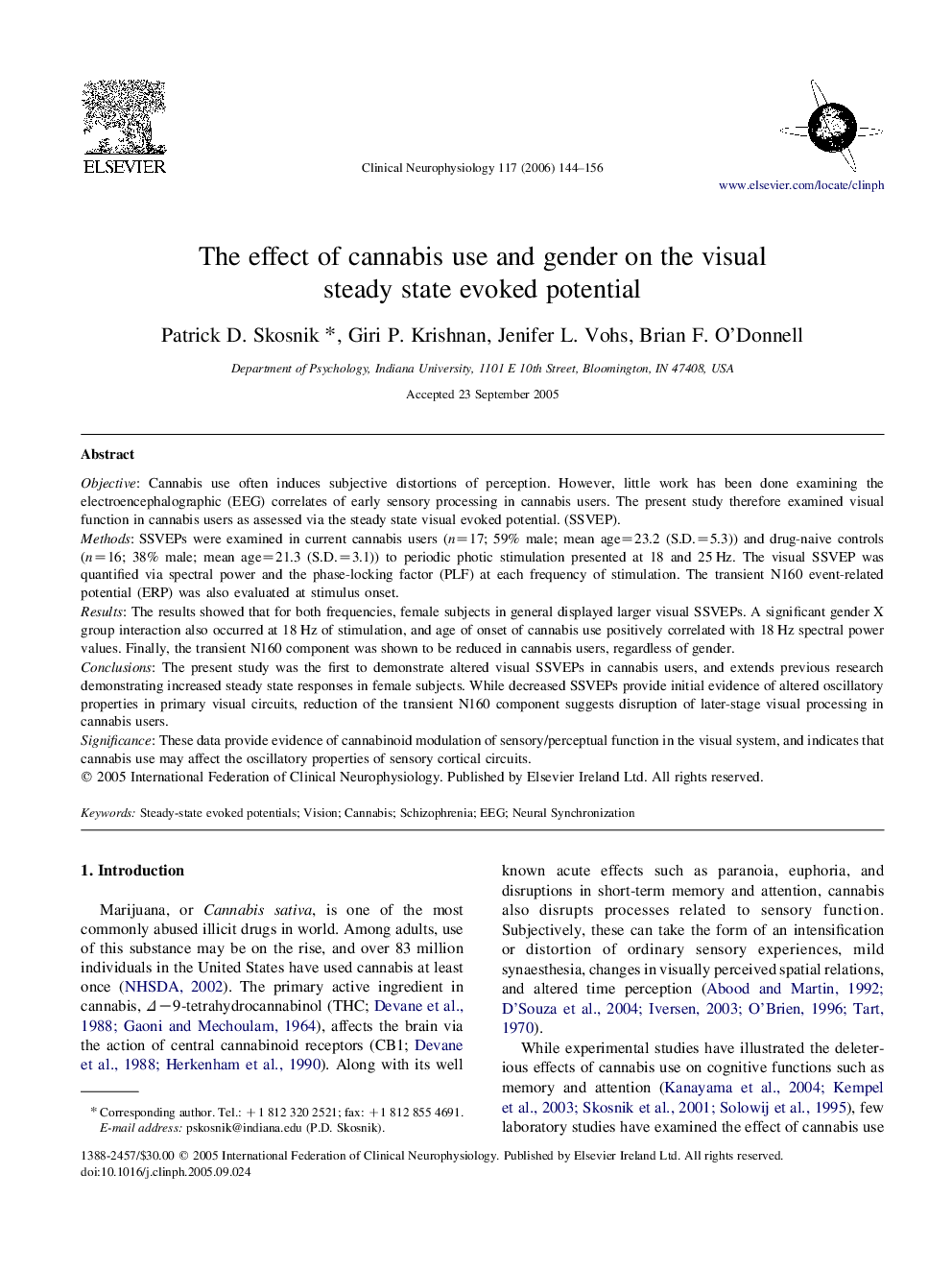| Article ID | Journal | Published Year | Pages | File Type |
|---|---|---|---|---|
| 3048076 | Clinical Neurophysiology | 2006 | 13 Pages |
ObjectiveCannabis use often induces subjective distortions of perception. However, little work has been done examining the electroencephalographic (EEG) correlates of early sensory processing in cannabis users. The present study therefore examined visual function in cannabis users as assessed via the steady state visual evoked potential. (SSVEP).MethodsSSVEPs were examined in current cannabis users (n=17; 59% male; mean age=23.2 (S.D.=5.3)) and drug-naive controls (n=16; 38% male; mean age=21.3 (S.D.=3.1)) to periodic photic stimulation presented at 18 and 25 Hz. The visual SSVEP was quantified via spectral power and the phase-locking factor (PLF) at each frequency of stimulation. The transient N160 event-related potential (ERP) was also evaluated at stimulus onset.ResultsThe results showed that for both frequencies, female subjects in general displayed larger visual SSVEPs. A significant gender X group interaction also occurred at 18 Hz of stimulation, and age of onset of cannabis use positively correlated with 18 Hz spectral power values. Finally, the transient N160 component was shown to be reduced in cannabis users, regardless of gender.ConclusionsThe present study was the first to demonstrate altered visual SSVEPs in cannabis users, and extends previous research demonstrating increased steady state responses in female subjects. While decreased SSVEPs provide initial evidence of altered oscillatory properties in primary visual circuits, reduction of the transient N160 component suggests disruption of later-stage visual processing in cannabis users.SignificanceThese data provide evidence of cannabinoid modulation of sensory/perceptual function in the visual system, and indicates that cannabis use may affect the oscillatory properties of sensory cortical circuits.
